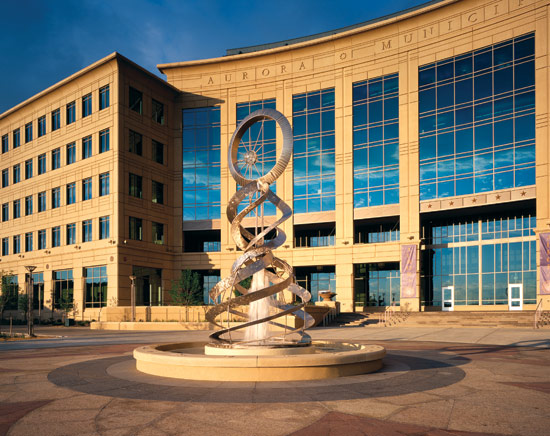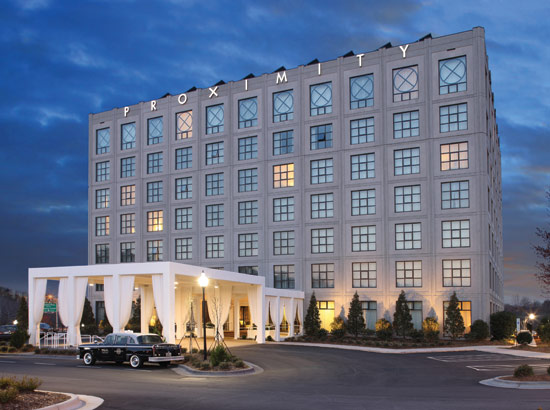Precast Concrete for High Performance Building Envelopes
Because of precast's initial plasticity, it may be economically designed with a combination of concave, convex, and flat sectional shapes that are difficult, if not impossible, to achieve with other materials. The medium's plasticity further enables it to interface smoothly with glass and other modern materials, and it can also be embedded, veneered, or sculpted to resemble a wide range of finish materials, including limestone and brick, ensuring that the building blends with nearby structures, whether contemporary or historic. Through the use of formliners, designers can affordably create supergraphics, custom aesthetic treatments, or realistic stone appearances.
• Structural versatility. Precast concrete can serve as structural and cladding/envelope system simultaneously, minimizing material use and accelerating construction. Precast concrete also provides for longer open spans with fewer columns and obstructions, as well as smaller structural cross sections through the use of high-strength concrete and prestressing. Precast hollow-core slabs and double tees, in particular, provide long, clear spans, opening interior spaces in projects from office buildings to parking structures in order to allow designers to maximize leasable or usable space within the building footprint. Loadbearing precast concrete wall panels can reach heights of 55 feet, while double tees can span 80 feet or more. The result of precast's structural versatility is more efficient and less costly construction. The cost savings are greatest for low- to mid-rise structures of three to 10 stories with a large ratio of wall-to-floor area, allowing the owner the ability to more easily adapt floor plans as building functions change.
 |
Colorado’s Aurora Municipal Building combines open space with a 286,000-square-foot building and a 241,000-square-foot parking structure. Both projects feature total-precast concrete structural systems, which combined architectural and structural components into single units. Photo by Michael Peck |
• Use versatility. Precast concrete both uses recyclable material, and is recyclable itself. Several common industrial byproducts, including fly ash, slag, and silica fume, which would otherwise go to landfills, can be incorporated into concrete as supplementary materials, reducing the necessary amount of cement. Formwork and finishing materials used in fabrication can be reused, with wood or fiberglass forms generally reused 40 to 50 times without major maintenance, and concrete and steel forms having virtually unlimited service lives.
| LEED Platinum Hotel Gains Energy Savings with Precast Concrete Wall Panels | ||
Designed by Centrepoint Architecture, Raleigh, North Carolina, to resemble an old cut-and-sew textile factory, the Proximity Hotel, a AAA 4-Diamond hotel, is the first hotel in the nation to achieve LEED Platinum certification. Featuring over 70 energy and health-related enhancements and earning 55 out of a possible 69 credits for LEED – New Construction, the hotel utilized high-performance, insulated, structurally composite precast concrete wall panels that are durable, impervious, and thermally efficient. The mass wall system includes 3.5 inches of continuous foam insulation at the core that exceeds ASHRAE energy standards, surrounded by exterior and interior precast concrete layers totaling 6.5 inches of concrete. Use of non-conductive wythe connectors virtually eliminated thermal bridging issues. The total material R-value of the wall panels is 15.5, with the panels contributing to a nearly 40 percent energy savings for the total structure, thus allowing the designers to downsize the capacity of the mechanical heating and cooling system for reduced first-cost and life-cycle savings.
|










